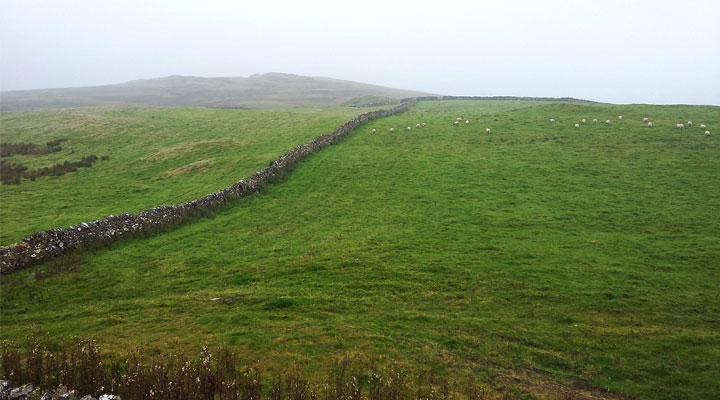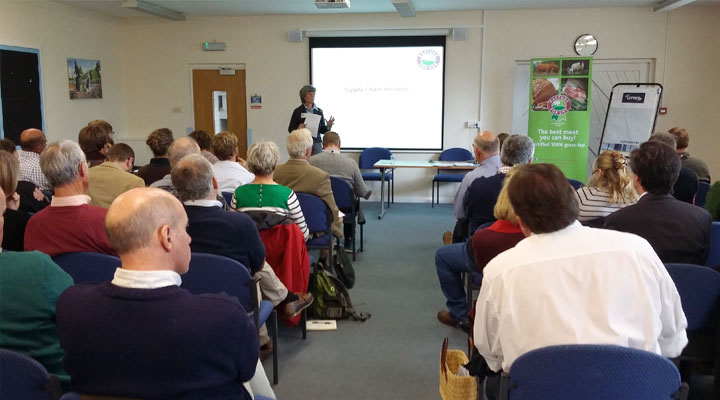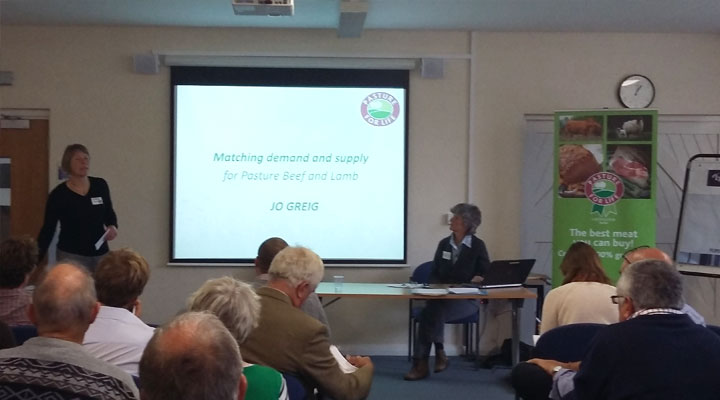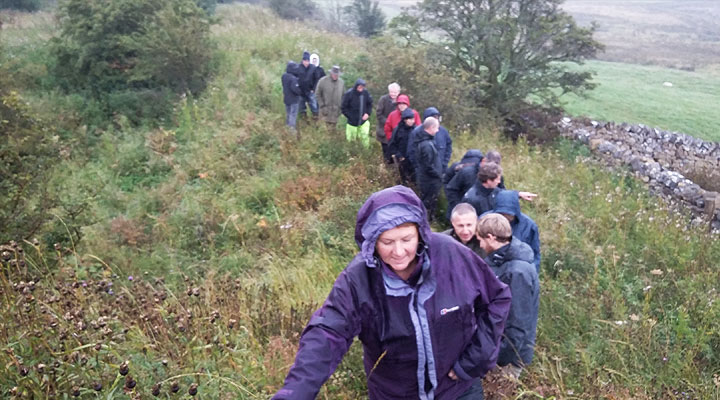PFLA AGM at Newton Rigg College, Cumbria
In keeping with the PFLA’s aim to hold each Annual General Meeting in a different part of the country, this year Members and guests travelled to Cumbria, where we were kindly hosted by Newton Rigg College.

As has become customary for the PFLA, the annual gathering is about much more than the official business carried out at the AGM itself. It is also a chance for Members to meet up in person, and often to put faces to the names encountered throughout the year on the google discussion group. It is also a chance to go on farm walks (see following article) and to invite guests to hear about the PFLA and the progress made.

This year was no exception and in fact centred around 2 days worth of activities. We met initially at Tebay Services on the M6 motorway. This is the only family-owned motorway service station business in the UK, set up by local farmers John and Barbara Dunning when their farm was cut in two by the newly-built motorway. Today the service station has a thriving farm shop and butchers, selling produce from the farm and surrounding area. This is a novel way to take advantage of the fact that motorway service stations are visited by thousands every day as people travel up and down the country and yet, despite often being located in the middle of the countryside, they rarely sell any local produce. The family have now opened a second services in Gloucester on the M5, also centred round a farm shop. They, and the butcher and other staff, were keen to hear about Pasture for Life and what we are doing.
Following this meeting, we set off in convoy to visit Frank Hunter’s farm Piper Hole, as explained in more detail in the article below, before gathering for a meal in Ravenstonedale.
The following day we met up at Newton Rigg College for the AGM itself and some additional presentations. We were welcomed by the College Principal, Wes Johnson and had an introduction from Matt Bagley, Head of Agriculture at Newton Rigg, who explained some of the background to the college, and some specific detail on what it means to farm in the uplands. This theme was expanded on by out first guest speaker, Julia Aglionby, of the Foundation for Common Land. Julia pointed out that while only 3% of England is common land, 23% of the Lake District is and that this gives a specific set of challenges to the farming in the region. She also spoke of a spectrum of producers, with Pasture for Life at one end. She felt, even those farmers, especially in the uplands, who may struggle to become 100% pasture-fed can still learn a great deal from the PFLA.
Chairman of the PFLA Board John Meadley then gave a general welcome and introduction before the formal business of the AGM. This included formally accepting the annual report and accounts and the announcement of the new Directors, Jonathan Brunyee, Simon Mellin and the re-election of Anna Basset for a second term. You can see more details about them here.

The rest of the morning was spent with various progress updates, including from Sara Gregson and Russ Carrington, on work being done on communications, attracting media coverage and using social media. All these are being harnessed to spread the Pasture for Life message and attract more farmers and consumers. Luppo Diepenbroek also filled us in on work done in collaboration with AHDB Beef and Lamb’s Stocktake programme, which analysed 10 PFLA farmers and compared them with conventional farms. Although the sample size is small, the results are encouraging, indicating that Pasture for Life certified farms are at least as profitable as conventional beef and sheep farms.
Other updates came from various people who have been helping build the PFLA. Fidelity Weston, who has been leading the Supply Chain Initiative, introduced this section before we heard from:
- Harry Greenfield giving an update on the supply chain initiative survey, which was sent to members and certified farmers to try to build a picture of where Pasture for Life certified stock is across the country, when and in what volumes.
- Tim Bastable explained about the work he has been doing using his knowledge and experience of the meat industry to try to build the supply chain. Tim has been visiting farmers and butchers to try and improve links in the chain.
- Tom Morrison, a Pasture for Life certified farmer, explained how his business had been turned around following some marketing advice from fellow member Alison Teare. Tom gave his local butcher a free forequarter and, as Alison had predicted, the butcher and his customers were so satisfied with Pasture Fed meat they came back for more.
- Andrew Brewster gave a view from Scotland where he has been spreading the Pasture for Life message and trying to link up farmers, abattoirs and butchers. He also gave a taste of his own experience with mob-grazing and a mobile chicken unit.
- Finally Neil Heseltine read a message from Caroline Watson of Primal Meats, who set out her experience in farming and butchery which led her to start selling meat online. This in turn led to her discovery of the PFLA as the only source of guaranteed 100% grass-fed meat, something which she now promotes to her customers.

The final presentation of the day was from Jo Greig, who the PFLA had contracted to look into the seasonality of meat supply and demand. Jo presented some very useful figures about the changing demand over the year, which mainly shows up with consumers looking for different cuts at different times of year (steaks and burgers for summer barbecues and slower-cooking cuts for winter stews) while overall demand stays constant. This work will feed into the thinking the organisation is currently doing on how to achieve year-round supply in order to meet demands of larger markets and wholesalers as we expand.
Following lunch, we then headed to Newton Rigg’s own Eyecott upland farm, where we hoped to see their herd of Luing cattle, bought in partnership with Cumbria Wildlife Trust. Unfortunately the weather prevented us from seeing a great deal, either from the top of the field looking down, or later from the bottom looking up. We did though catch a glimpse of the bull before everyone made their way home again.




